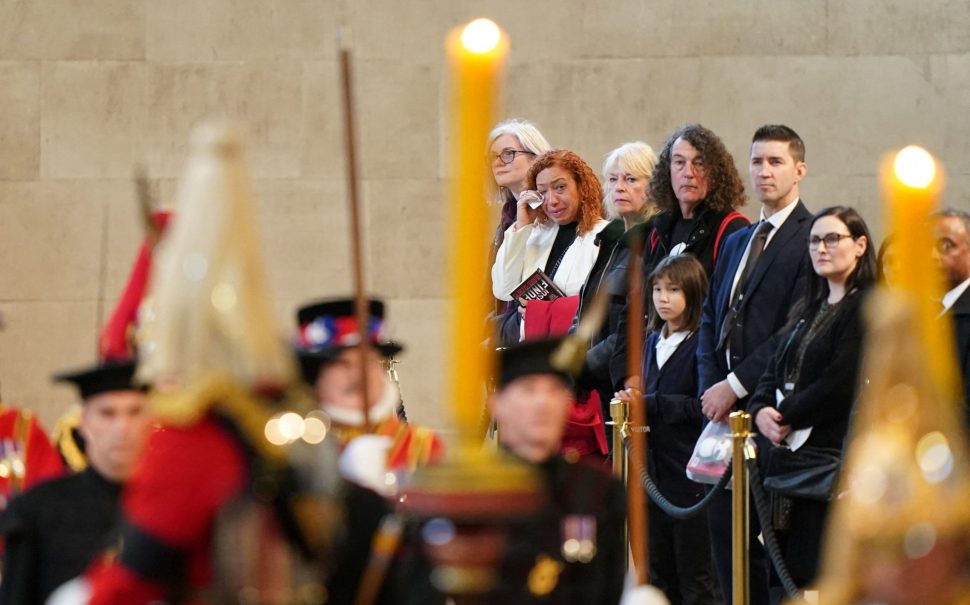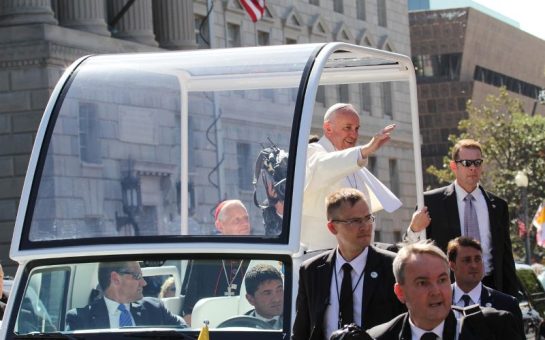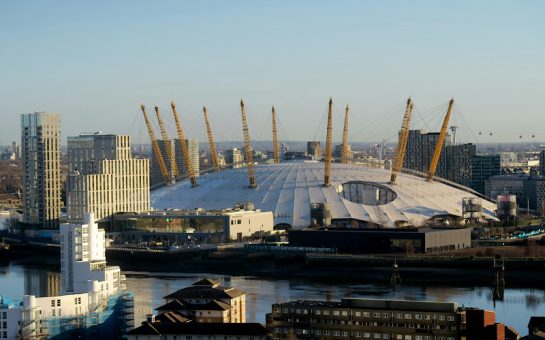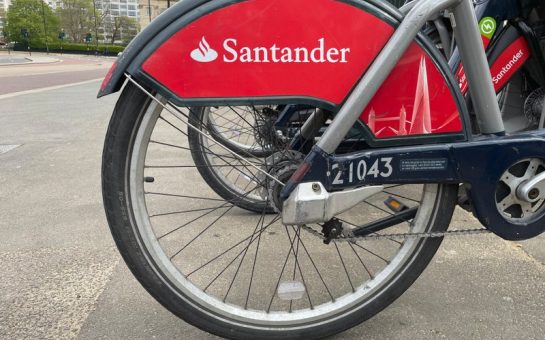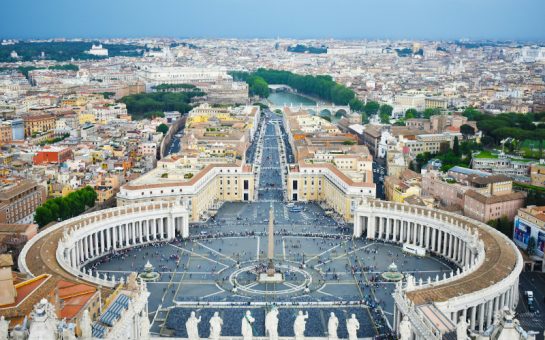London is not traditionally a city that assaults the senses, but these are days to reconsider all we’ve previously known.
In Green Park it’s the smell, the sweet fragrance of thousands of flowers that drifts down Piccadilly as you walk from the Tube.
In the medieval magnificence of Westminster Hall, it’s the almost deafening sound of silence that stands you still.
The shuffling of feet, the occasional sob and the echoing tap, tap, tap on the flagstones of a soldier’s ceremonial sword, which signals yet another foot-perfect changing of the guard.
Almost a thousand years of this nation’s celebrated history, the good, bad and ugly, is etched on the three-metre thick walls of this stunningly simple place, with its soaring hammer-beam roof, bookended by majestic stain-glass.
Henry VIII banqueted here, both King Charles I and Guy Fawkes stood trial and Queen Elizabeth II performed her very last and most sacred public duty.
For four days, time was frozen and the still-life scene unchanged, whatever the hour.
The towering candles, the scarlet catafalque, the coffin draped in the royal standard and adorned with the Crown Jewels, all framed by the loyal watch of ramrod guards. It was like a rather macabre display at Madame Tussauds.
After queuing, sometimes rather jovially, for hours, the enormity and solemnity of the scene strikes you simultaneously.
Some bow, others salute, there are awkward curtseys, whispered prayers and tears. After their long wait, a few linger a little too long while others just march on by, not even giving the casket a glance, seemingly content just to be in its presence.
But for the mourner’s attire, the odd football shirt was spotted amongst these regal supporters, it could have been 1910, 1936 or 1952 and the vigils for her father, grandfather and great-grandfather.
Brits have a reputation of a nation that is eager to stand in line. There’s a joke they’d join the back of a queue before asking what it’s for.
In London’s smallest royal park they wait patiently to lay their flowers, scenes repeated 20 miles to the west in Windsor.
In between the blooms, well-wishers have left balloons, porcelain horses, soft toys, flags of every nation and, because this is Britain, jars of marmalade.
Then there’s the words, thousands of them, written in scores of tongues, scribbled in crayon and scrawled in ink.
In recent days there is a new contender for the title of the city that never sleeps.
For the past week London has been a city-in-waiting, patience, good humour and reverence to an institution that probably baffles most but is all they’ve ever known.
It’s easy to sneer at those who spend the best part of a day waiting in line to spend a few fleeting seconds with the coffin or sleep the night on cold tarmac for a glimpse at her funeral cortege.
And then there are those so overcome by a sudden ‘need to be here’ that they’ve made the journey from far-flung corners of her realm, a sometimes uneasy alliance of nations forged by the pink bits of a long-yellowing world order.
It all seems a little surreal when you write it down, until you get there and, by some strange osmosis, it slowly starts to make sense.
Perhaps, as with all things, it was Paddington Bear, who in recent months has become an unlikely royal mascot, who said it best.
“In London, everyone is different, and that means anyone can fit in.”
It’s the final farewell of Queen Elizabeth’s long goodbye on Monday. It’ll be a squeeze.
Image: Members of the public file past the coffin of Queen Elizabeth II, draped in the Royal Standard with the Imperial State Crown and the Sovereign’s orb and sceptre, lying in state on the catafalque in Westminster Hall (Reuters via Beat Media Group subscription)
